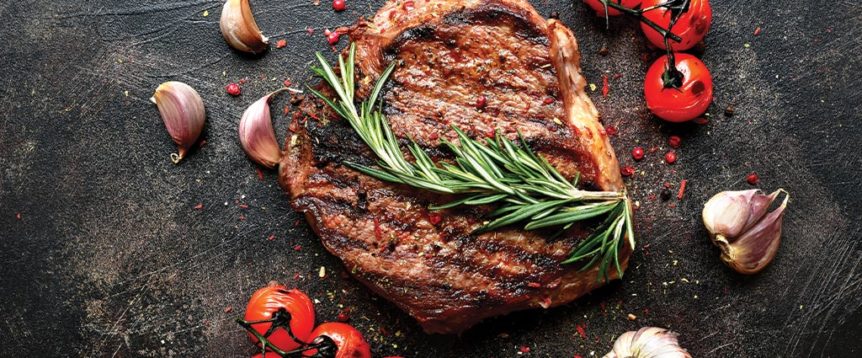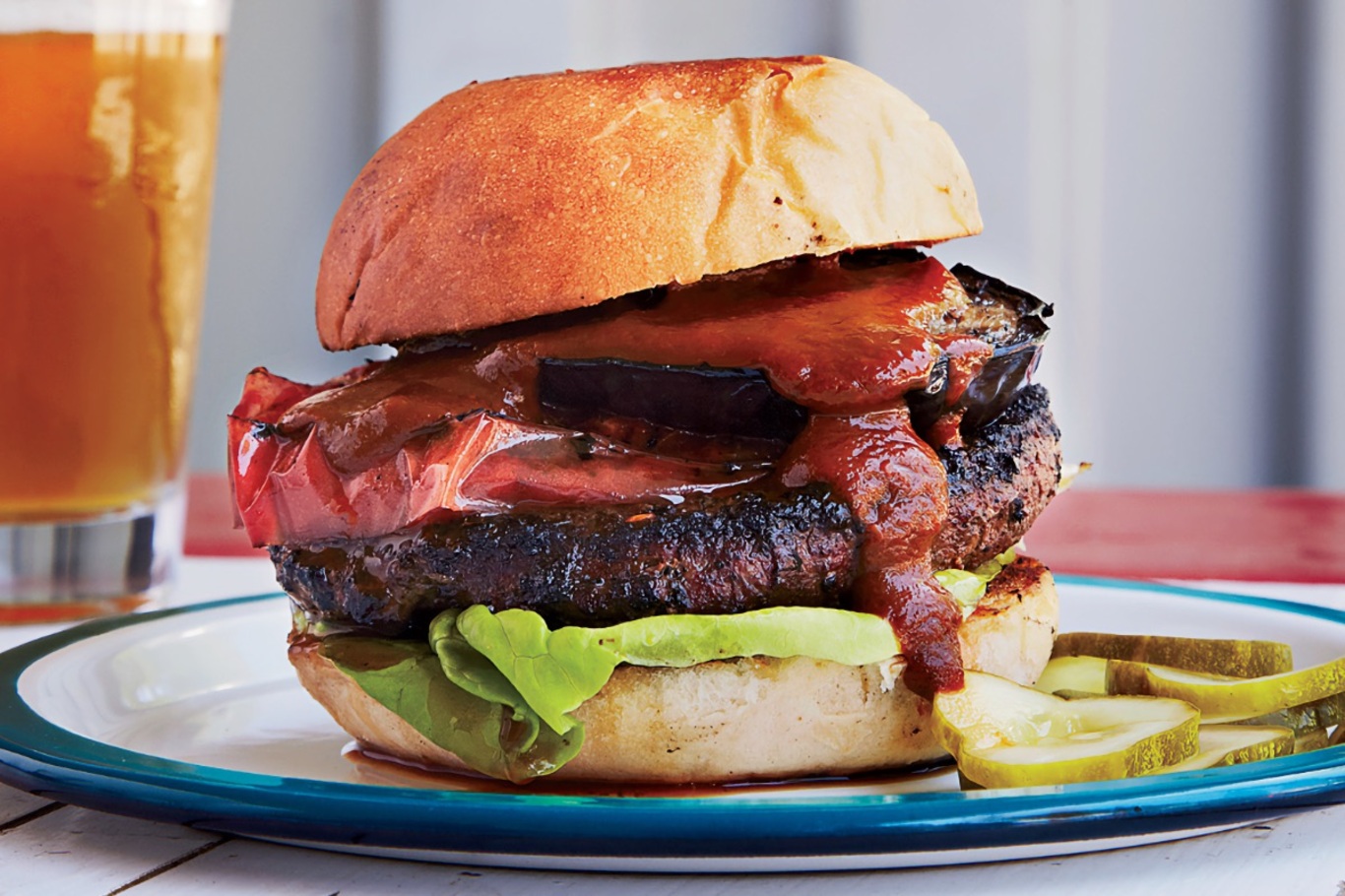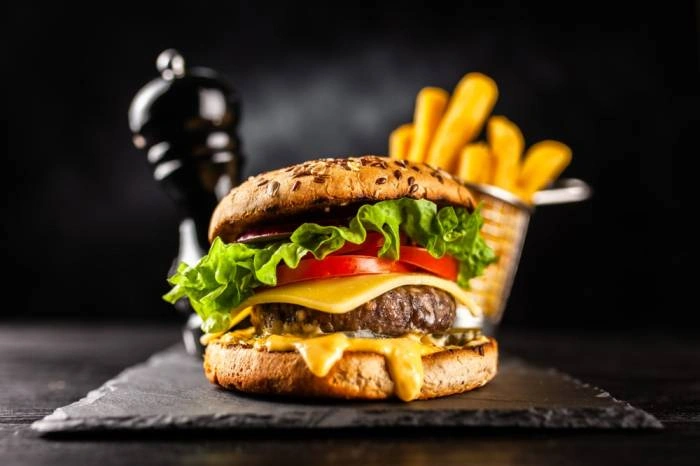There's something undeniably magical about biting into a perfectly crafted hamburger. It's not just a meal; it's an experience, a celebration of flavors and textures coming together in harmony. Whether you're hosting a summer BBQ or craving a comfort food fix, mastering the art of the hamburger can elevate your culinary skills. This recipe promises to deliver the best hamburger you've ever tasted, with step-by-step instructions and tips to ensure perfection every time.
Ingredients
:max_bytes(150000):strip_icc()/AR-72657-best-hamburger-ever-ddmfs-4x3-step-01-ingredients-a8e347a97d0541f3a96e02ff7001a04f.jpg)
The Essential Components
Creating the best hamburger ever recipe starts with the finest ingredients. Here's what you'll need:
- Ground Beef: 80/20 blend for optimal flavor and juiciness
- Buns: Soft, fresh, and sturdy enough to hold the burger
- Toppings: Lettuce, tomatoes, onions, pickles
- Cheese: Cheddar, American, Swiss
- Condiments: Ketchup, mustard, mayo, special sauce
Selecting the Best Beef
The foundation of a great burger is high-quality beef. Look for an 80/20 blend, which means 80% lean meat and 20% fat. This ratio ensures a juicy and flavorful patty. For the best results, consider grinding your own beef at home using cuts like chuck, brisket, or short rib.
Importance of Fresh Buns
A burger is only as good as its bun. Choose buns that are fresh, soft, and sturdy. Brioche or potato buns are excellent choices as they provide a slight sweetness and can hold up to all the toppings without falling apart.
The Role of Toppings
Toppings can make or break your burger. Stick to fresh, high-quality ingredients. Crisp lettuce, ripe tomatoes, and crunchy pickles add texture and flavor. Don't forget the onions – whether raw, grilled, or caramelized, they bring a unique sweetness to the burger.
Preparing the Beef

Choosing the Right Cut
Opt for cuts like chuck, brisket, or short rib for grinding. These cuts offer the right balance of flavor and fat content.
Grinding Your Own Beef
For the freshest burgers, grind your own beef at home. This way, you control the fat content and avoid any unwanted additives. Use a meat grinder or a food processor, and grind the meat twice for a finer texture.
Seasoning the Meat
Keep it simple. Mix the ground beef with salt and pepper just before cooking. Over-mixing can result in a tough patty. For an extra kick, consider adding a splash of Worcestershire sauce or a pinch of garlic powder.
Forming the Patties

Tips for Shaping the Perfect Patty
Divide the meat into equal portions, around 6 ounces each. Gently shape them into patties without overworking the meat.
Ideal Patty Thickness
Aim for a patty that's about 3/4-inch thick. This ensures it cooks evenly and remains juicy.
Creating an Indent for Even Cooking
Press a small indent in the center of each patty with your thumb. This helps the burger cook evenly and prevents it from puffing up in the middle.
Cooking Methods

Grilling the Patties
Preheat your grill to medium-high heat. Cook the patties for about 4-5 minutes per side for medium-rare, or until they reach your desired doneness. Avoid pressing down on the patties to keep them juicy.
Stovetop Cooking
Heat a cast-iron skillet over medium-high heat. Cook the patties for about 4-5 minutes per side. For a crispy crust, don't move the patties around while cooking.
Oven-Baking Alternative
Preheat your oven to 400°F (200°C). Place the patties on a baking sheet and cook for about 10-12 minutes, flipping halfway through. This method is great for cooking multiple burgers at once.
Bun Selection and Preparation

Choosing the Right Bun
Select buns that are soft yet sturdy. Brioche and potato buns are top choices. Avoid buns that are too dense or too light, as they can either overpower or fall apart.
Toasting the Buns
Toasting the buns adds a delicious crunch and helps prevent them from becoming soggy. Spread a little butter on the cut sides and toast them on the grill or in a skillet until golden brown.
Toppings and Add-ons
Classic Toppings
- Lettuce: Crisp and fresh
- Tomato: Sliced thick and juicy
- Onions: Raw, grilled, or caramelized
- Pickles: Sliced dill or sweet pickles
Gourmet Toppings
- Avocado: Creamy slices or guacamole
- Bacon: Crispy strips
- Fried Egg: Adds richness
- Arugula: Peppery and fresh
Sauce Varieties
- Ketchup and Mustard: The classics
- Special Sauce: A mix of mayo, ketchup, and relish
- BBQ Sauce: Smoky and sweet
- Aioli: Garlic-flavored mayo for a gourmet touch
Cheese Options
Best Cheeses for Burgers
- Cheddar: Sharp and flavorful
- American: Melts perfectly
- Swiss: Nutty and mild
- Blue Cheese: For a bold taste
Melting Techniques
Place the cheese on the patty about 1-2 minutes before it's done cooking. Cover the grill or skillet with a lid to help the cheese melt evenly.
Assembly of the Hamburger

Layering Techniques
Start with the bottom bun, then add lettuce to prevent the bun from getting soggy. Follow with the patty, cheese, onions, tomatoes, and pickles. Spread condiments on the top bun before placing it on top.
Keeping the Burger Intact
To prevent your burger from falling apart, layer your toppings strategically. Heavier items like the patty and cheese should be placed lower, while lighter toppings like lettuce and tomatoes go on top.
Serving Suggestions
Side Dishes
- French Fries: Classic accompaniment
- Sweet Potato Fries: For a healthier twist
- Coleslaw: Adds a refreshing crunch
- Onion Rings: Crispy and delicious
Beverage Pairings
- Beer: A cold lager or IPA
- Soda: Classic cola or root beer
- Milkshake: Vanilla or chocolate for a sweet contrast
- Iced Tea: Refreshing and light
Tips and Tricks
Preventing a Dry Burger
Don't overcook your patties. Use a meat thermometer to ensure they reach an internal temperature of 160°F (71°C) for ground beef.
Adding Moisture
Mix in a little bit of butter or olive oil with the ground beef. Alternatively, try adding a tablespoon of mayonnaise to the meat mixture.
Flavor Enhancement
Let the patties rest for a few minutes after cooking to allow the juices to redistribute. This results in a juicier and more flavorful burger.
Common Mistakes to Avoid

Overcooking the Patty
Cook the patties to medium-rare or medium to keep them juicy. Overcooked patties can become dry and tough.
Using the Wrong Bun
Avoid buns that are too hard or too soft. They should complement the burger without overpowering it or falling apart.
Overloading with Toppings
Too many toppings can make the burger difficult to eat and overshadow the taste of the beef. Keep it balanced.
Variations of the Classic Burger
:max_bytes(150000):strip_icc()/rajma-burgers-FT-RECIPE0621-9553e92af454461f8dc7e28bdb54dd57.jpg)
Veggie Burger Option
Use black beans, chickpeas, or mushrooms as the base. Combine with breadcrumbs and spices, then cook similarly to beef patties.
Turkey Burger
Opt for ground turkey for a leaner alternative. Season well to enhance the mild flavor, and cook to an internal temperature of 165°F (74°C).
Seafood Burger
Salmon or shrimp burgers are unique and tasty. Mix with breadcrumbs and seasonings, then grill or bake until cooked through.
Conclusion
Crafting the best hamburger ever recipe is an art that combines quality ingredients, precise cooking techniques, and thoughtful assembly. By following this comprehensive guide, you'll be well on your way to burger perfection. Whether you're a novice cook or a seasoned chef, this recipe will elevate your burger game and impress everyone at your next cookout.
FAQs
Q. Best type of beef for burgers?
Ans: An 80/20 blend of ground beef is ideal for burgers, providing the perfect balance of flavor and juiciness.
Q. How to keep burgers juicy?
Ans: Avoid overcooking, use a meat thermometer, and let the patties rest after cooking to retain moisture.
Q. Can I make burgers without a grill?
Ans: Yes, you can cook burgers on a stovetop using a cast-iron skillet or bake them in the oven.
Q. Best way to melt cheese on a burger?
Ans: Add the cheese to the patty in the last 1-2 minutes of cooking and cover with a lid to ensure even melting.
Q. How to prevent buns from getting soggy?
Ans: Toast the buns before assembling the burger, and place lettuce directly on the bottom bun to act as a barrier.
